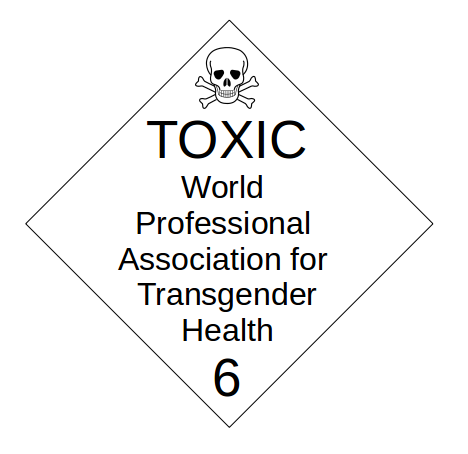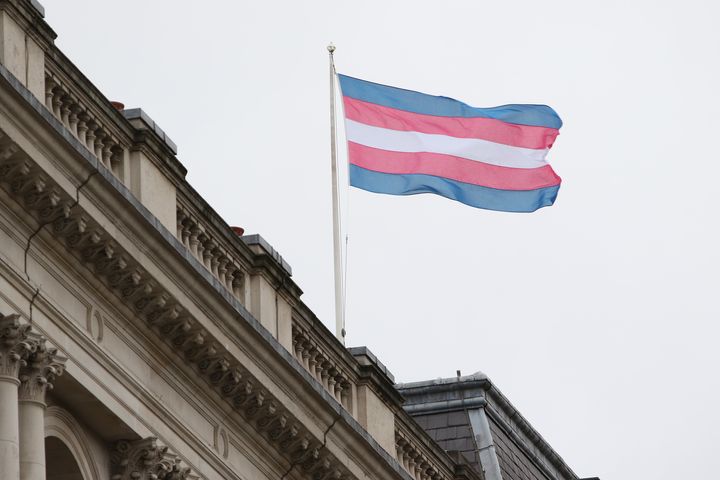What Is Gender-Critical Feminism?
A review of Holly-Lawford Smith's "Gender-Critical Feminism" (Oxford U Press, 2022)

I’d never heard of gender-critical feminism until a few years ago. I came across it on the now banned subreddit r/GenderCritical where it was often used interchangeably with radical feminism.
Radical or gender critical, I figured I must be one of these kinds of feminists since my heretical view on gender identity ideology meant I no longer had a home in my old tribe, let’s call it some version of liberal feminism. One minute, I was happily campaigning for a woman’s right to choose, the next I was being reprimanded for using the word ‘woman’. It was dizzying. It still is.
But since ‘feminism’ and ‘the Left’ have drifted off to places I no longer recognise, I’ve become wary of adopting any political label, especially when I’m not sure what it stands for. Finding out what this new feminism is, and where it fits in the pantheon of feminisms is what motivated me to read and write about Holly Lawford-Smith’s new book, Gender-Critical Feminism (OUP, 2022).
Three Aims
Lawford-Smith is a political philosopher at the University of Melbourne, Australia, and as a woman who challenges current orthodoxies, has endured years of attacks and cancellations, including an effort to prevent publication of this very book. So big chops to her at the outset for writing the book and putting herself out there.

She sets up her project by listing three aims: to describe a feminism that can fill the gap left by the one that no longer deserves the name; to show us “how helpful philosophical ideas can be” in the service of our cause; and to reintroduce us to radical feminism. Ultimately, it’s the first aim that subsumes the other two.
The New Radical Feminism?
If you’ve come to gender-critical feminism through opposition to trans identity ideology, as so many women have, you might think that issue will be the book’s primary focus — clearly the members of the OUP USA Guild thought so when they launched their petition to have the book cancelled — but that’s far from the case.
In seeing gender-critical feminism as “a new iteration of radical feminism” — more on what radfems think of this below — Lawford-Smith spends a lot of time focusing on issues long championed by radical as well as other species of feminism, including the harm of porn, the sex trade, as well as adding her own, more controversial discussion about problems with intersectionality.
What unites these issues for Lawford-Smith is — you guessed it — women as a sex caste or class. (I know, it’s a sign of the madness of the times that a ‘feminism’ needs to specify that women are its constituents, but here we are.) If something oppresses or disadvantages women as women — “in virtue of their sex-based rights and interests” — then it’s a feminist issue. If it doesn’t, it’s not.
The Burden of Intersectionality
This is a litmus test of sorts that lies at the heart of Lawford-Smith’s critique of intersectionality, which she argues has effectively neutered the movement, “over-burdening feminism with a million different issues” and transforming it from a “movement by women for the liberation of women to a movement by anyone for the equality of everyone.”
She is aware this is controversial, and likely puts her at odds with most if not all other ‘feminisms’ out there. Lawford-Smith even goes so far as to warn any sympathetic readers against “simply announcing at the next meeting of your feminist activist group that you think the group should take the commitment to intersectionality out of its manifesto. Discussions on this topic will have to be approached with sensitivity about what they may be assumed to mean.”
It’s important to point out that what Lawford-Smith is not doing is denying women experience intersections of oppressions, or that feminism shouldn’t strive, for example, to be an anti-racist movement. What she is denying is that every issue produced by every intersection is necessarily a feminist one.
She works hard making the case, and investigating ways we might “prevent bloating of the feminist agenda” (and there’s a lot more detail in an academic paper co-written with Kate Phelan), which comes back, again, to that litmus test (here stated in different terms): “The easy test of whether something is an issue for women as women or women as persons is to ask whether the men of the further [oppressed] social group face the same issue.”
“The easy test of whether something is an issue for women as women or women as persons is to ask whether the men of the further [oppressed] social group face the same issue.”
From there, it’s not too hard to see why the sex trade — porn and prostitution — are encompassed by gender-critical feminism, since women as a class comprise the group most harmed by both. Defending gender-critical feminism’s opposition to the sex trade takes up several chapters of the book, with Lawford-Smith favouring the so-called Nordic approach to prostitution that criminalises the purchase of sex. She also backs the criminalisation of the making of professional pornography and of all forms of paid surrogacy.
'Trans / Gender'
The question of what is a woman may have become difficult to answer for some people, but not for Lawford-Smith’s gender-critical feminism: “To be a ‘woman’ is to be an adult human female; a member of a sex class that has a history of oppression … For gender-critical feminists, feminism is about female people.” She also clearly distinguishes sex and gender, “viewing sex as a biological fact and gender as a system of norms imposed on the basis of sex,” where “femininity” would be the gender norm (I prefer stereotype) imposed on women/females.
“To be a ‘woman’ is to be an adult human female; a member of a sex class that has a history of oppression."
As it is now mandatory to do in most critiques of gender identity ideology, Lawford-Smith states that gender-critical feminism is not anti-trans, writing that there is no tension between protecting sex under the law and “also supporting the protection of gender identity, transgender status, or gender expression”: “There is no hatred or other ‘anti’ sentiment anywhere in the view.” What’s more, since it welcomes ‘transmen’ as females, gender-critical feminism is also not ‘exclusionary’. (I guess the absence of the ‘E’ means we won’t see the adoption of TEGCF to replace the slur TERF anytime soon.)
Nevertheless, like radical feminists, she sees the abolition of gender as the ultimate answer, ending the section on “Trans/Gender” like this: “Gender abolitionism is the only sensible response to a harmful system of norms that constrains people’s life choices and impacts on their well-being. Accommodating gender identity means leaving in place a system that harms women in general because that system is desirable from the perspective of a small group of trans people. No feminism worth its salt should be willing to make that trade.”
Lawford-Smith wraps up the book with a ‘Gender-Critical Manifesto’ in the form of a 70-point list, bold and worthy, but also somehow depressing in its length and breadth. The manifesto is organised into five loose groupings: on ending violence against women and girls; addressing contributors to this violence; protecting women's health and bodily autonomy; protecting women's freedom of conscience and thought; and women's access to full participation in public life. Even without the ‘burden’ of intersectionality, it seems gender-critical feminism comes with its own overwhelming agenda built in.
Radical Feminist Pushback
There’s already been some tough criticism of the book from radical feminists, who don’t appreciate being told gender-critical feminism is “a new iteration” or “the revival” of radical feminism. To the contrary, Julia Long sees it as undermining radical feminism, which is still alive and kicking, thank you very much.
The gender-critical program also cedes far too much ground to trans ideology for some radical feminists. “She asserts that gender-critical feminism is not anti-trans,” Long said of Lawford-Smith’s book. “I think that's probably true, gender-critical feminism isn't anti-trans. But in that way, don't try to replace radical feminism with gender-critical feminism, because we absolutely are completely opposed to transgenderism, as we are opposed to pornography, prostitution — as we are opposed to any form of men's oppression of women.”
So Am I a Gender-Critical Feminist, or What?
Lawford-Smith more or less achieves the three aims of her book. Yes, this gender-critical feminism can fill some of the gap left by the feminism that no longer deserves the name, but not all of it. (And to be fair, Lawford-Smith is careful to situate this effort as a contribution to the “work in progress” that is gender-critical feminism.)
Yes, philosophical ideas can be helpful to the cause, but it’s hard not to feel that since so many of our current problems have their origin in that very quarter, academics should close their laptops in favour of a tour of duty in the activist trenches. The flaw in that piece of advice in these times is that writing a book like this one is itself an activist act, so what we actually need are more gender-critical (or merely skeptical) academics stepping up to do the same.
Finally, yes, Lawford-Smith does reintroduce the reader to radical feminism, even if she leaves out, as Long and others complained, some recent key texts, among them Sheila Jeffreys' Gender Hurts, Kara Dansky’s The Abolition of Sex, and Ruth Barrett’s collection Female Erasure.
I learned a great deal from both reading Gender-Critical Feminism and listening to the discussions and critiques that have come out since its publication. In the end, though, it all but convinced me that radical feminism is the way to go, and that the last thing we need is another movement calling itself feminism, and trying to figure out what it stands for.
Radical feminism exists, it has a whopping great history of activism and literature behind it, so why not work with that? Who knows, maybe one day Oxford University Press will even publish a book about it.
Alison McCulloch is the author of ‘Fighting to Choose: the abortion rights struggle in New Zealand’ and a co-author of ‘The Democracy Manifesto: A Dialogue on Why Elections Need to be Replaced With Sortition.’ She has a Ph.D. in philosophy, and lives in Aotearoa New Zealand.
Enter your email below to sign in or become a 4W member and join the conversation.
(Already did this? Try refreshing the page!)




Comments